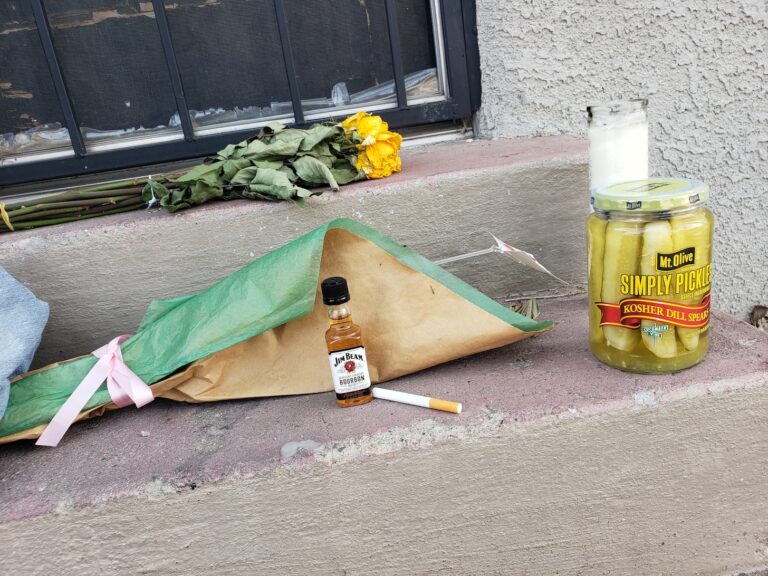In an interview with the Associated Press, Bill Keller, the New York Times executive editor, articulated what many editors were thinking. “On the one hand, you can't shy away from the news, and the news in this case is the indignities visited upon the victims and the jubilation of the crowd,” he said. “At the same time you have to be mindful of the pain these pictures would cause to families and the potential revulsion of readers, and children, who are exposed to this over their breakfast table.”
On Thursday, April 1, The Times, in addition to the Boston Herald and Miami Herald, was one of the few morning dailies to run a cover AP photo of charred American bodies hung from a bridge above a small gathering of celebratory Iraqis.
That same AP photo appeared in both the Albuquerque Tribune on March 31, and the Albuquerque Journal on Thursday, April 1. In both local papers, the image ran on the inside pages, not the cover, where it would be obviously less provocative. Likewise, other major-market papers including The Los Angeles Times, USA Today, Washington Post and Chicago Sun-Times, ran the photo inside. Other morning dailies chose not to run any photos of dead Americans, the report said.
Most interestingly, the AP reported that the video footage shown on American television was minimal compared to what was broadcast by other media outlets worldwide.
Why? Several network TV news producers believed showing the most graphic images would have been unnecessary to accurately convey the story. In other words, some TV news producers believed it was better to describe the event than show it—which, one might think, defeats the whole purpose of their existence.
For example, Fox News Channel limited the footage to burning vehicles and omitted the corpses entirely. “We made the call that it was too graphic in nature to put on our air,” said Bill Shine, Fox's vice president of production. Too graphic for Fox? What about the grisley corpses of Saddam Hussein's sons? That wasn't too graphic to show American audiences. Or what if Osama bin Laden's body shows up hung from a bridge somewhere? Will that be too graphic in nature to show American viewers? We all know the answer to that one.
Steve Capus, executive producer of “NBC Nightly News” echoed the Fox sentiment, saying the footage of dead bodies “doesn't need to be seen in full in order to convey the horrors of this despicable act.”
CBS' “Evening News,” the AP report states, did briefly show graphic imagery, but blurred the bodies. CNN also suppressed the dead body images initially, then chose to reveal a few seconds of the clip on “Anderson Cooper 360,” with the correspondent from Iraq explaining, “We believe some images are necessary to fully illustrate the extent of the violence.”
“Thin Line” says it is the responsibility of the media to report the story with the most accurate footage that best indicates the facts unfolding around the attacks. Sanitizing or censoring the images is not responsible reporting. It's bad enough that the Pentagon has concealed images of American coffins returning home. Besides, television has the luxury of issuing a “graphic content advisory” and that's what the station's should have done, before showing the realities in Iraq. Americans should know the truth. It's a gruesome war and folks ought to at least witness from their living rooms what it is they are funding and supporting.





